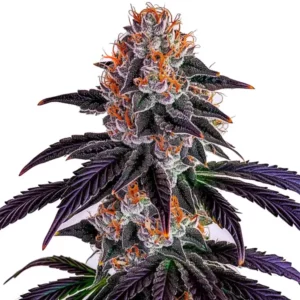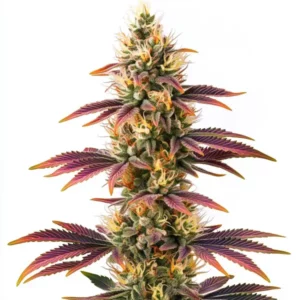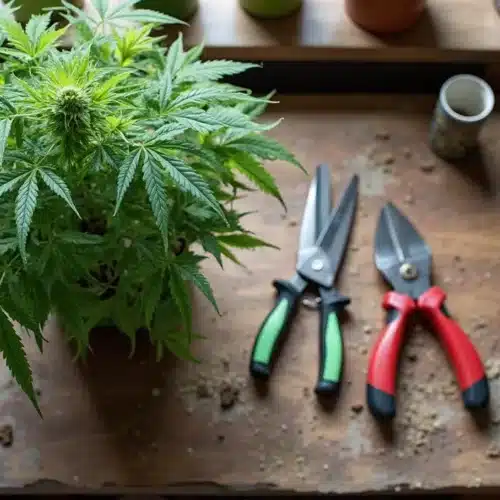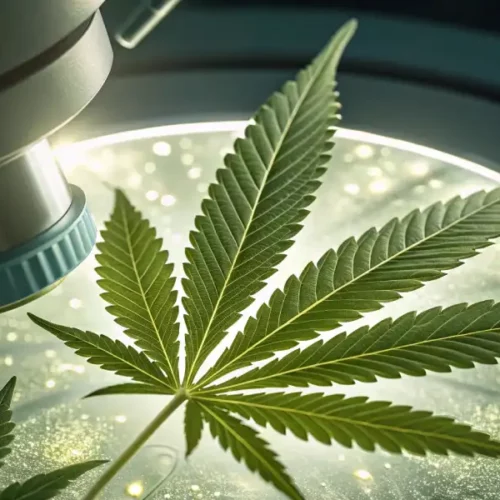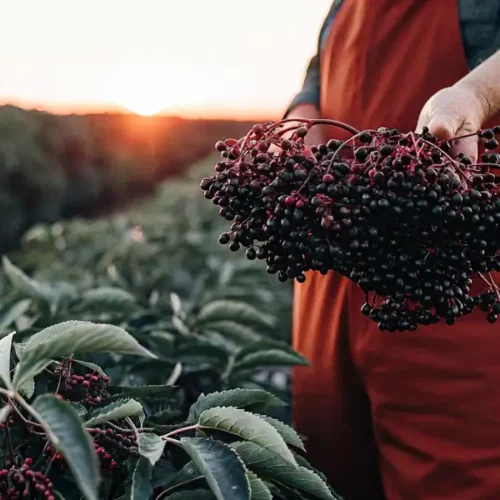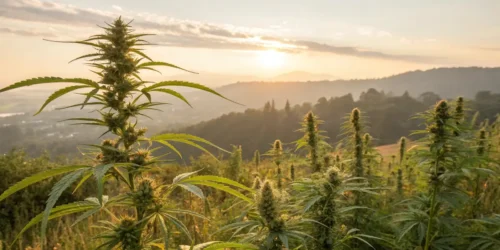Sativa strains of Cannabis sativa typically provide an uplifting experience, resulting in a ‘high.’ These strains are characterized by a significant limonene content, known for its mood-enhancing properties. Conversely, there are cannabis strains like Indica that promote feelings of sleepiness. The levels of tetrahydrocannabinol (THC) in a strain can impact the sleep cycle, with higher THC amounts potentially leading to insomnia or restless sleep. Cannabis also contains terpenoids, contributing to its unique characteristics. Some of the terpenes found in cannabis include: Myrcene, Limonene, Pinene.
In the analysis called “The Cannabis sativa Versus Cannabis indica Debate: An Interview with Ethan Russo, MD” where the specialist Ethan Russo provides different visions by virtue of his studies and analysis, an answer is obtained in which the genetics of sativa tendency as those that can give us that energy. Obviously this depends on the terpene composition of the genetics we consume. Let’s see what the specialist says.
“While it may be tempting to seek simple explanations for complex systems, this approach proves futile and potentially hazardous when dealing with psychoactive substances like Cannabis. To truly understand the effects of a specific Cannabis strain, it becomes crucial to quantify its biochemical components and correlate them with real-world patient experiences. Despite the rise of CBD-dominant strains, the majority of Cannabis available is derived from high-THC strains. The variations in observed effects are often linked to terpenoid content, a factor seldom measured or disclosed to consumers.
The commonly held belief that indica strains induce sedation due to CBD content is misguided; in reality, CBD has stimulating effects at low and moderate doses. The sedative properties in many Cannabis strains can be attributed to their myrcene content, a monoterpene known for its potent couch-lock effect resembling a narcotic. On the other hand, strains with a high limonene content, akin to citrus peels, tend to uplift mood. Additionally, the presence of the relatively uncommon Cannabis terpene, alpha-pinene, has the potential to effectively mitigate or eliminate the short-term memory impairment typically induced by THC”.
Is there actually a difference between Indica and sativa?
In his work “Species Plantarum” of 1753, Linnaeus officially established the designation Cannabis sativa (C. sativa), thus creating an important botanical reference point. The precise definition of C. sativa, according to the International Code of Nomenclature (ICN), is detailed in the Linnaean protolog, where the essential elements associated with the valid publication of the taxonomic name are described.
McPartland and Guy (2017) carried out a comprehensive analysis of the Linnaean protolog for C. sativa, revealing a concise description covering the relevant floral parts of the genus Cannabis. Linnaeus, in his work, mentioned synonyms and their respective authors, geographically confining C. sativa to northern Europe, supported by herbarium specimens from that region.
Linnaeus’ herbarium houses the type specimen of C. sativa, morphologically aligned with a fiber variety indigenous to northern Europe. The inflorescences show a loose arrangement, with floral leaves exhibiting scattered sessile glandular trichomes. The perigonal bract surrounding the seeds has a relatively sparse coverage of pedunculated glandular trichomes.
Lamarck, in 1785, introduced the term C. indica for Indian plants and their descendants, differentiating them from C. sativa in eight different morphological traits. He highlighted specific characteristics of C. indica, such as “the female flowers with hairy calyx and long styles,” as well as distinctive chemotaxonomic properties, such as the strong odor and intoxicating properties when smoked. Although it took nearly 230 years for these distinctions to be fully recognized, Lamarck’s description laid the groundwork for identifying the morphological and chemical differences between C. sativa and C. indica.
The effects of cannabis vary based on the specific terpene and cannabinoid profiles of each strain. Therefore, the chemical composition of the plant is a crucial aspect for cannabis enthusiasts when choosing varieties. It’s not surprising that an increasing number of stores are providing information not only on Total Active Cannabinoids (TAC) but also on the predominant terpene profiles present in each strain.
Indica strains tend to have moderate levels of cannabidiol (CBD), but more importantly, they contain sedative terpenes, with myrcene being a standout. Many users wonder whether indica is a downer or upper, and its relaxing effects often answer that question. These components deliver a relaxing body effect, which can be beneficial for relieving stress, insomnia, and body pain. For this reason, some users classify it as a classic downer weed strain. Regarding tetrahydrocannabinol (THC) content, the primary psychoactive compound in cannabis, indicas typically have lower THC levels or a more balanced ratio with CBD, making them less psychoactive with fewer intense euphoric or mental effects.
On the other hand, sativa strains tend to have higher THC levels and stimulating terpenes such as limonene, pinene, and terpinolene. Popular strains like Silver Haze marijuana also contribute to euphoric effects and can be useful for boosting creativity, improving mood, and combating fatigue. However, sativas with very high THC levels can cause intense psychoactive effects and may not be suitable for all users.

Promos & Deals
Is sativa or Indica more euphoric?
When many cannabis enthusiasts think about strains that deliver a “feel-good high,” their minds often turn to sativa varieties. Why? Well, sativa strains are commonly linked with feelings of lightness, laughter, and a cerebral buzz that can make people feel giddy and euphoric. However, it’s not accurate to assume that every sativa strain inherently possesses more euphoric properties than indicas.
While sativas are generally known for their energizing effects, numerous anecdotal reports suggest that indicas can also bring about a profound sense of euphoria. The euphoria associated with indicas may lean towards relaxation and sedation compared to sativas, but it’s still a valid experience. Furthermore, scientific reports indicate that the sativa vs. indica distinction is not as straightforward as once thought. Despite their distinct growth patterns, these differences don’t necessarily translate into noticeable variations in physiological effects.
Rather than fixating on the sativa vs. indica percentage, consumers should pay attention to the THC concentration in their cannabis strain. In general, strains with higher-than-average THC concentrations are likely to deliver a more intense euphoric impact. Any flower with a delta-9 THC content above 20% will exert the most significant influence on a user’s endocannabinoid system (ECS).
It’s important to note that high THC concentrations also come with an increased risk of adverse reactions, such as paranoia. Consumers should evaluate their THC tolerance before selecting the right strain for them. Additionally, it’s crucial to explore the typical effects associated with different cannabis hybrids. Take a moment to browse cannabis forums or visit dispensaries to learn what others are saying about various cultivars.
As mentioned earlier, sativa-dominant strains often produce an energetic and uplifting high. But is sativa the upper or downer? Based on terpene and THC content, it typically acts as a stimulant. Both strain families can elicit euphoria, but the nature of that euphoria can vary significantly.
Is sativa a upper or downer?: Does sativa make you laugh?
As the saying goes, there were originally two distinct varieties of cannabis at the outset: Cannabis sativa sativa and Cannabis sativa indica. However, through years of cultivation and cross-breeding, the original “pure” strains have been eliminated, giving rise to numerous hybrids, none of which can be accurately labeled as purely sativa or indica. Only biochemical assays (7) can precisely reveal the composition of a cannabis plant.
Does sativa or indica make you giggle?
So, if you’re inclined towards a lighthearted experience, how do you determine which cannabis variety is most suitable? In the appropriate environment and mental state, any type of marijuana has the potential to elicit laughter. Nevertheless, certain strains may enhance this likelihood based on a variety of factors.
Both Sativa and Indica strains can provoke laughter, but strains that naturally induce euphoria are typically the most effective for generating laughter. Some experts suggest that strains containing specific terpenes, such as limonene and pinene, might also be more successful in promoting laughter.
When the goal is to experience laughter, it’s essential to elevate your mood. Generally, the most effective marijuana strains for inducing laughter are those that are uplifting and energizing, producing a more pronounced cerebral effect.

Is sativa a upper or downer? : What is the most euphoric strain in 2024?
The most euphoric genetics are those that, as we already described in the text, have certain specific qualities such as the terpenes that make up their flowers. Furthermore, those varieties with the so-called “sativa tendency” usually enjoy this quality, although they are not the exception. Now we will see what are those genetics that we recommend for 2024 that is on the way. Some are from the new generations of the cannabis world and others are all legends for the same reason, stay tuned.
Strawberry Diesel
Strawberry Diesel stands out as the ultimate hybrid due to its lineage, combining two premium strains, Strawberry Cough and NYC Diesel. This particular hybrid cultivar boasts elevated THC levels and lacks CBD content, making it an ideal choice for muscle relaxation, with the potential for an uplifting experience. Some users also attest to its effectiveness in clearing the mind and suggest its potential benefits for anxiety, depression, and post-traumatic stress disorder (PTSD). Moreover, the Strawberry Diesel strain has gained recognition for its ability to address insomnia. Despite its sleep-inducing properties, it is not restricted to nighttime use and is suitable for daytime consumption, helping users navigate busy days with minimal disruptions.
The aroma of Strawberry Dieselis captivating, inheriting a rich and sweet scent from its distinguished parent strains. Many users appreciate it solely for its fragrance, though the noteworthy effects it produces should not be overlooked.
This cannabis hybrid, known as Strawberry Diesel, has gained popularity in the market, especially in regions on the West Coast, Michigan, Colorado, and Montana in the United States. Its powerful effect provides a large dose of energy to the user, creating a unique experience. At the end of the trip, the feeling of relaxation takes over, offering a perfect balance between energy and serenity. In addition, its terpene and cannabinoid profile has been praised by connoisseurs, highlighting its delicious strawberry aroma and its therapeutic properties. Consumers find Strawberry Diesel a versatile option that combines the best of both strains, making it an attractive choice for those looking for a well-balanced cannabis consumption experience.

Mimosa F1
Mimosa F1, with a THC content ranging from 19% to 27% depending on the cultivar, is a cannabis strain known for its diverse effects. Additionally, this strain typically contains less than 1% CBD. In small doses, Mimosa F1 delivers happy and uplifting effects, making it ideal for social situations or creative pursuits. Users often report heightened energy, motivation, and a clear-headed focus, facilitating productivity in everyday tasks.
On the contrary, larger doses of Mimosa induce a more calming effect, which can cause relaxation and drowsiness. To avoid overconsumption, it is essential to start with a small amount and gradually increase it as needed. Remember that when consuming small doses of mimosa the feeling of euphoria and joy is incredible and lifts you into the air as if you were on top of an airplane. For this reason, it is good to have a more moderate consumption of Mimosa if what you are looking for is a state of joy and euphoria that is bearable, rather than the obvious relaxation that this genetic causes in larger quantities.
Exploring the terpenes in Mimosa F1 sheds light on its aromatic profile and potential therapeutic benefits. Myrcene, a common terpene found in cannabis and other plants like mangoes, hops, and thyme, contributes a musky and earthy aroma, known for its relaxing effects. Pinene, another terpene present in Mimosa and various plants such as pine trees, rosemary, and sage, boasts an aromatic scent often used in fragrances and cleaning products.
Caryophyllene, a terpene found in cloves, black pepper, and hops, is not only known for its spicy and woody aroma but is also widely used as a food additive. The diverse effects and aromatic compounds in Mimosa F1 makes it essential for users to tailor their consumption based on desired outcomes. Whether seeking a burst of energy for social interactions or a tranquil evening,Mimosa F1 offers a versatile cannabis experience.
Is sativa a upper or downer?: Neville’s Haze
Neville’s Haze, primarily derived from the Haze strain, clinched the top spot in the seeds category at the 1998 High Times Cannabis Cup. Its Haze lineage contributes to a potent Sativa-style high, inducing a euphoric, giggly bliss that can uplift the mind. While the effects are robust, they tend to inspire creativity and productivity at lower doses, rather than anchoring users.
Despite its merits, Neville’s Haze does come with common adverse reactions like dry eyes and mouth, and some users may encounter dizziness, headaches, or paranoia. Notably, this strain, boasting a THC content of up to 21 percent, is often recommended for individuals dealing with chronic depression, stress, and anxiety.
Some users turn to Neville’s Haze to divert attention from persistent pain, while others find relief from insomnia. Additionally, it is chosen to mitigate nausea and the symptoms of glaucoma. Neville’s Haze is a blend of Haze (Sativa) and Northern Lights (Indica), resulting in a strain mostly sativa. Growing True Neville’s Haze can be challenging due to its sensitivity to pH levels, and flowering can take up to 8-10 weeks.



